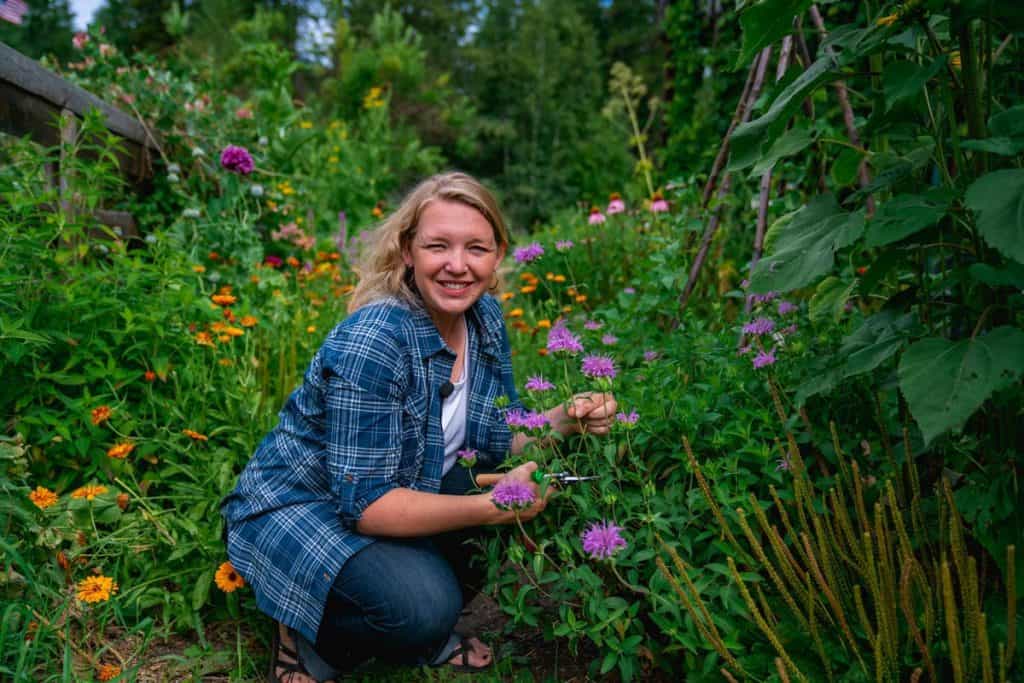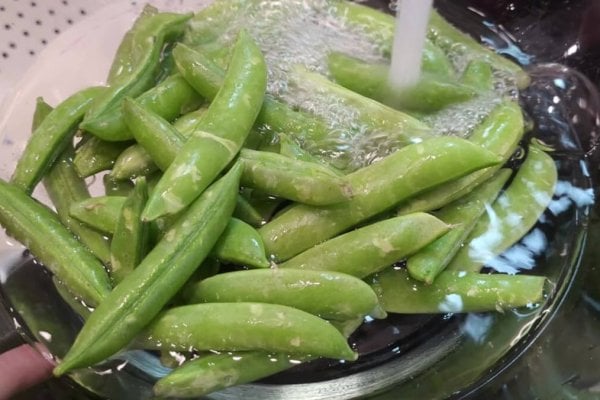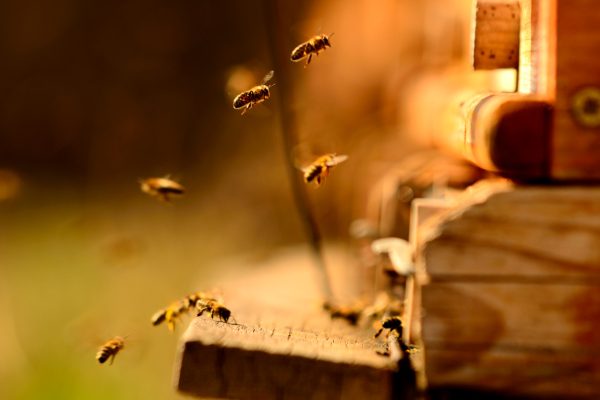
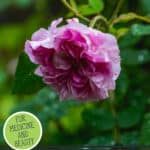

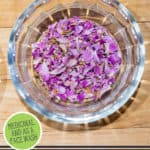
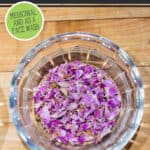

Planting roses for medicinal purposes is a great idea for any house or homestead. Not only are the plants wonderful to look at, but they will come back year after year to provide you with an endless supply of flowers, petals and medicinal uses. Learn about the health benefits, choose between bush and climbing varieties, and learn to plant, care for, and harvest (or dead head) your roses for maximum growth.
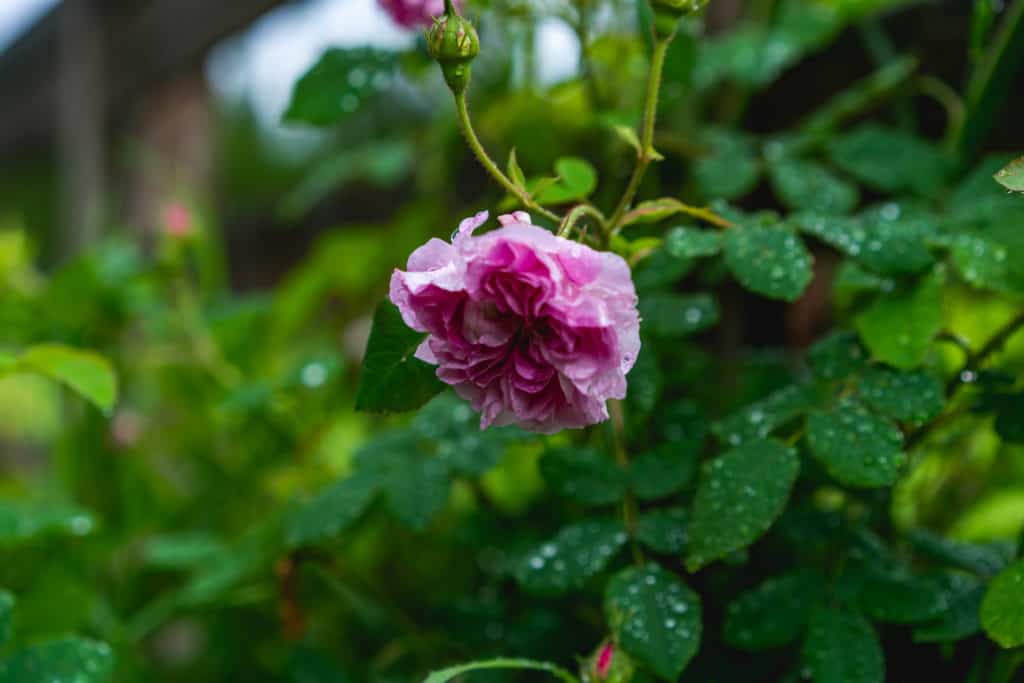
Why You Should Begin Planting Roses
Rose bushes were one of the first things I thought about planting when designing my old-fashioned cottage garden. Not only are rosehips packed with vitamin C (great for boosting your immune system naturally), I also love using rose petals to make my DIY rose and honey face wash.
Roses are just one of the many medicinal herbs I grow. Check out the rest of the medicinal herbs that I grow and their uses.
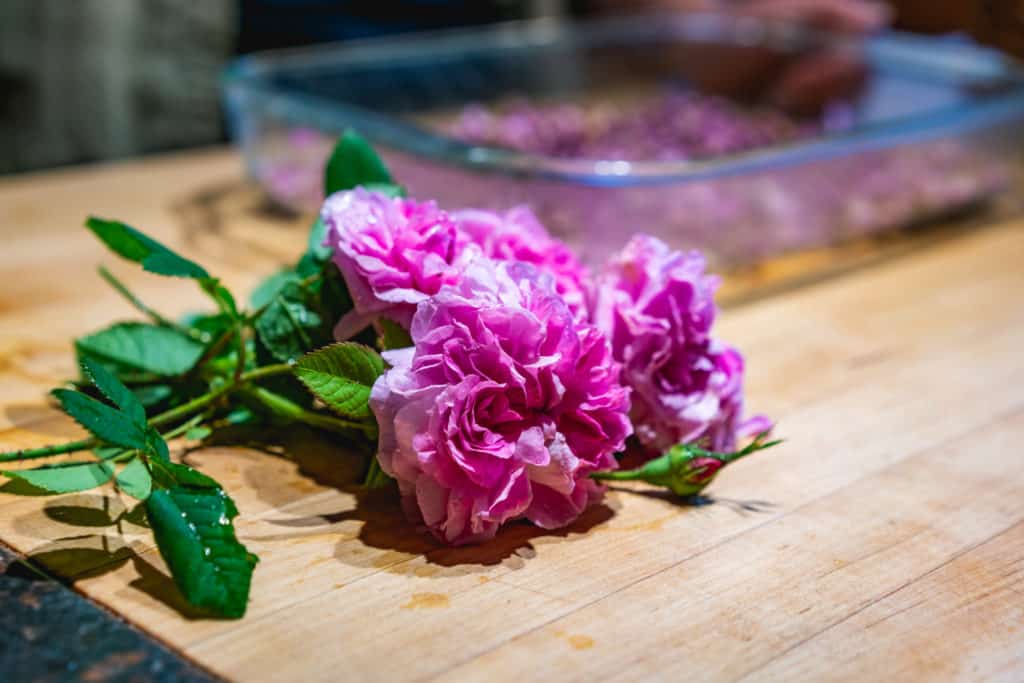
Health Benefits of Roses
The benefits of rose petals are many. They’re rich in vitamins, especially vitamin C, and have minerals such as iron, selenium and zinc. (Source) Furthermore, rose petals:
- Contain therapeutic relaxation properties (Source)
- Are antibacterial
- Astringent
- Anti-viral (Source)
- Anti-inflammatory
- A diuretic
- And contain mood-enhancing properties (anti-depressant)
The medicinal properties of roses listed above mean that it can help with the following:
- Soothing a sore throat
- Nervous tension
- Anxiety/grief
- PMS/menopause
- Headaches
- Peptic ulcers
- Hypertension
- Fluid retention
- Bronchitis/colds
- Urinary tract infection
- Heart disease
- Digestion issues (flatulence, constipation, upset stomach and diarrhea)
It’s important to note that I am not a certified medical practitioner. This post is not intended to diagnose or treat but is for informational purposes only. Please contact your healthcare professional before introducing new herbal and natural remedies into your wellness routine.
Best Medicinal Roses to Plant
When looking to use roses medicinally, you want to look for old-fashioned roses that have a lot of scent. Damask roses (Rosa damascena) are what I grow, but some other options are Galaga roses (Rosa gallica) and Wild Dog roses (or Rosa canina).
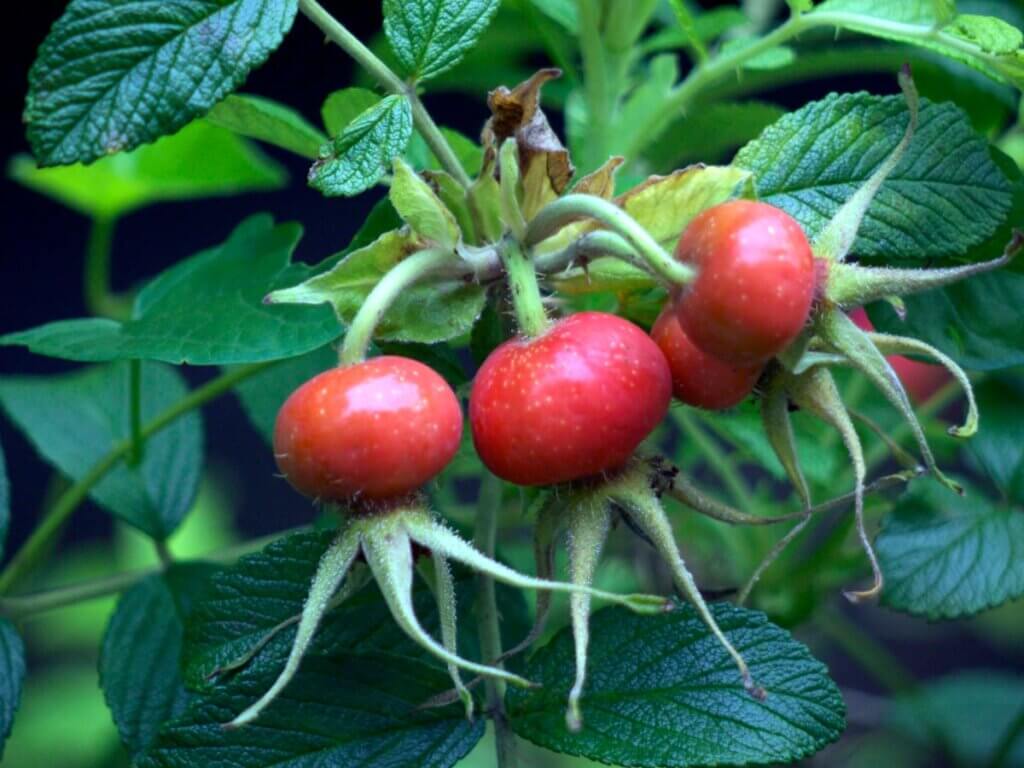
What Part of the Rose Plant is Used Medicinally
The medicinal parts of a rose bush are many. The petals, rose hips, roots, root bark, and essential oil all have medicinal properties. However, most people focus on the petals, rosehips and essential oils.
I’m just getting started with distilling my own essential oils, so maybe one day I’ll add rose essential oil to our homestead medicine cabinet. I’ll be sure to share the tutorial when I do.
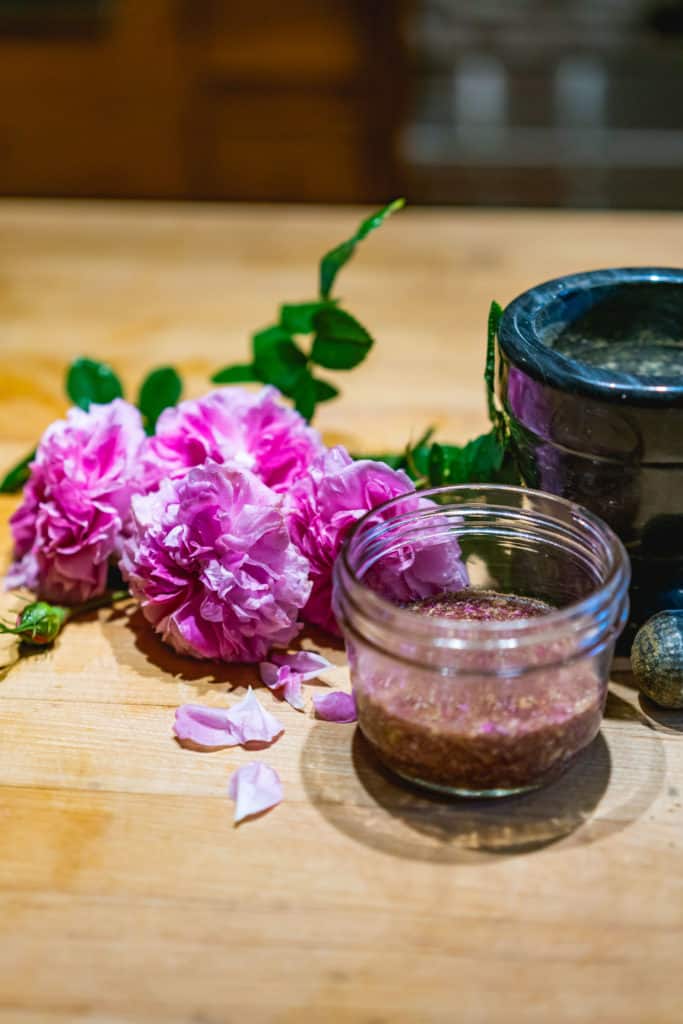
Ways to Use Roses Medicinally
The health benefits of roses are many (as listed above). Because of this, roses can be used in teas, honey, syrups, herbal tinctures and glycerites. Rosehips can also be dried (learn to dry herbs here) and then turned into herb capsules (learn how to encapsulate herbs here).
Beyond that, roses can be made into an oxymel for a home remedy for a cough and you can infuse white wine with rose petals to use for headaches and depression. The fragrant scent of the rose petals makes it a great addition to a DIY sugar scrub.
A rose petal tea is a nice way to enjoy its relaxing and throat-soothing properties. Add one teaspoon of dried rose petals to a mug, pour one cup of hot water over the top and cover with a plate. Let steep for ten minutes, strain, sweeten (if desired) and enjoy.
If you’re not yet growing your own roses, be sure to check out our affiliate Farmhouse Teas for dried rose petals and dried rose hips. Rose hips are a great addition (and add a boost of vitamin C) to homemade elderberry syrup.
Perhaps my favorite use for rose petals has to be my rose and honey face wash recipe. It’s soothing, healing and wonderful for maturing dry skin.
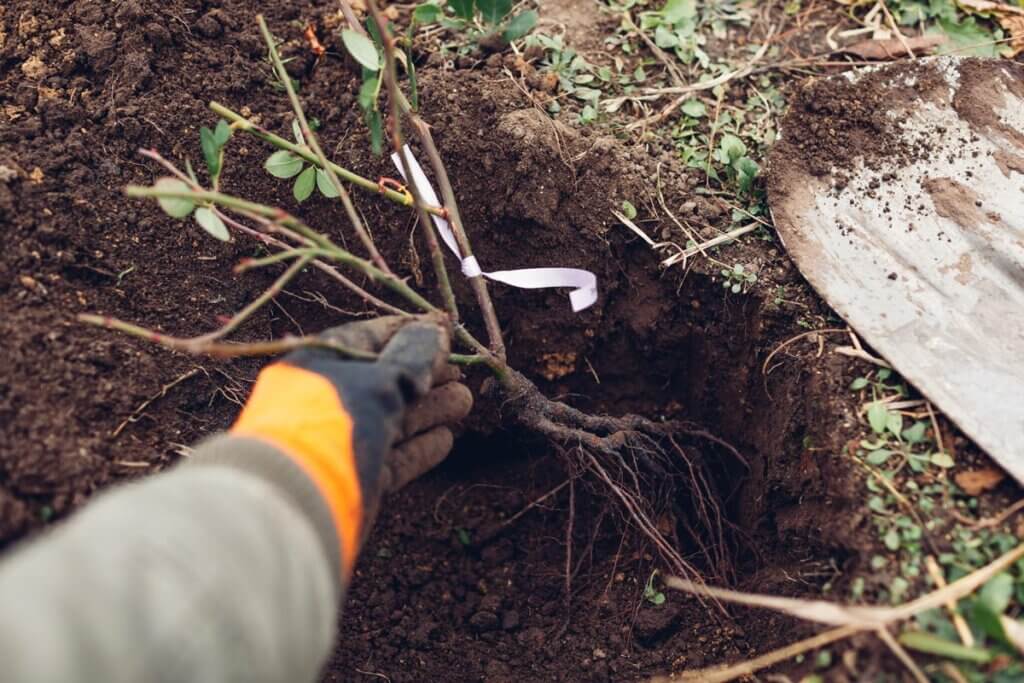
How to Grow Roses
Planting Roses
This is not an exhaustive tutorial for planting roses, but there are some things you’ll want to consider before putting your rose bush in the ground.
Keep in mind that transplanting roses is best done in early spring while the plant is still in dormancy (before new growth begins). Plant after the threat of frost has passed and before the temperature raises too much. The ideal planting temperature is between 40-60°F.
- Dig a Hole – Dig a hole as deep as and slightly wider than the rose’s root ball. Depending on the maturity of your rose bush, the size of the hole will vary. Mix in some bone meal (a handful will do) and a few handfuls of compost with the soil you removed from the hole. Bone meal will help the rose bush acclimate, and compost will add vital nutrients to the soil.
- Inspect the Rose – Depending on whether you purchased a rose bush in a container or a bare-root plant, you’ll want to unpackage them both and inspect them. For a bare-root rose bush, clip away any broken or rotting roots and soak the roots for 12 hours before planting. If your rose bush is in a pot, gently tip the plant upside down and remove the pot. Carefully loosen the roots (especially if they’ve become root bound). If planting a larger bush, prune each cane back to 6-8 inches long (this helps the energy go into the roots instead of plant or flower growth).
- Plant – When planting your rose bush, you want the graft union to be just below the soil level. Ideally, the graft union will be 1-2 inches below the soil as the plant settles. Fill in the hole with as much of the remaining soil as possible and gently press down, adding more soil as needed.
- Water – Give your rose bush a good drink of water just after planting. This will help the soil settle, and you may need to top off the plant with a bit more soil/compost. Check the soil, watering as needed (about every two days initially, more if the weather is especially dry and warm). Water every couple of days until your plant is established (once it starts sending out new growth).
- Mulch – Finally, add a couple of inches of mulch. Mulch will help keep the soil from drying out too quickly, and it will help keep the roots cool during hot weather.
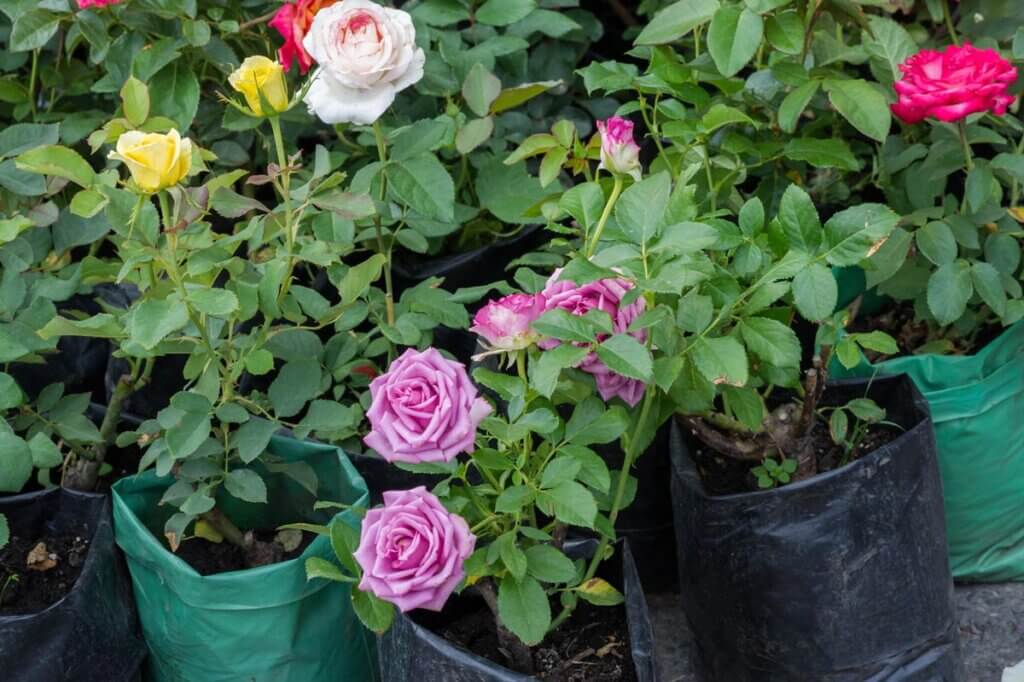
Growing Tips
Once your rose bush is established, it will likely need weekly watering. To encourage growth you can add fertilizers like homemade compost tea every four to six weeks. You’ll want to continue watering your rose bush up until the first frost, but you can stop fertilizing six weeks before your average first frost.
If you live in a climate where the ground never freezes, continue watering throughout the winter.
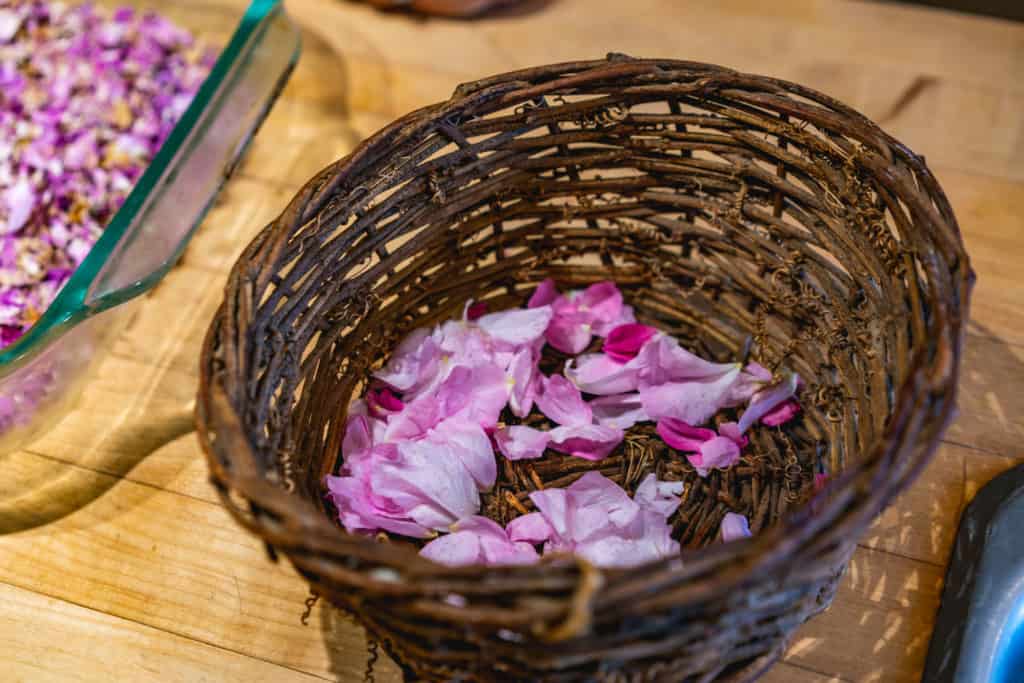
How to Harvest Rose Petals
When harvesting rose petals, collect them on a dry day. The best time to harvest any medicinal plant is early in the morning, as soon as the dew dries on the plant.
This is when the sugars on the plant are the highest, and the aromatherapy effects are also the highest. You’ll also end up with the most fragrance from the plant.
To Harvest Roses:
- Pull off the entire flower bud.
- Immediately pull the petals off the flower bud and place them into a basket.
- Use rose petals fresh or dry them for long-term storage.
When you pull off the entire flower bud (instead of just harvesting a few petals at a time), you’re actually “dead-heading” the rose bush. When you dead-head the entire flower bud, you’re telling the plant to continue producing flowers because it didn’t have a chance to go to seed to reproduce.
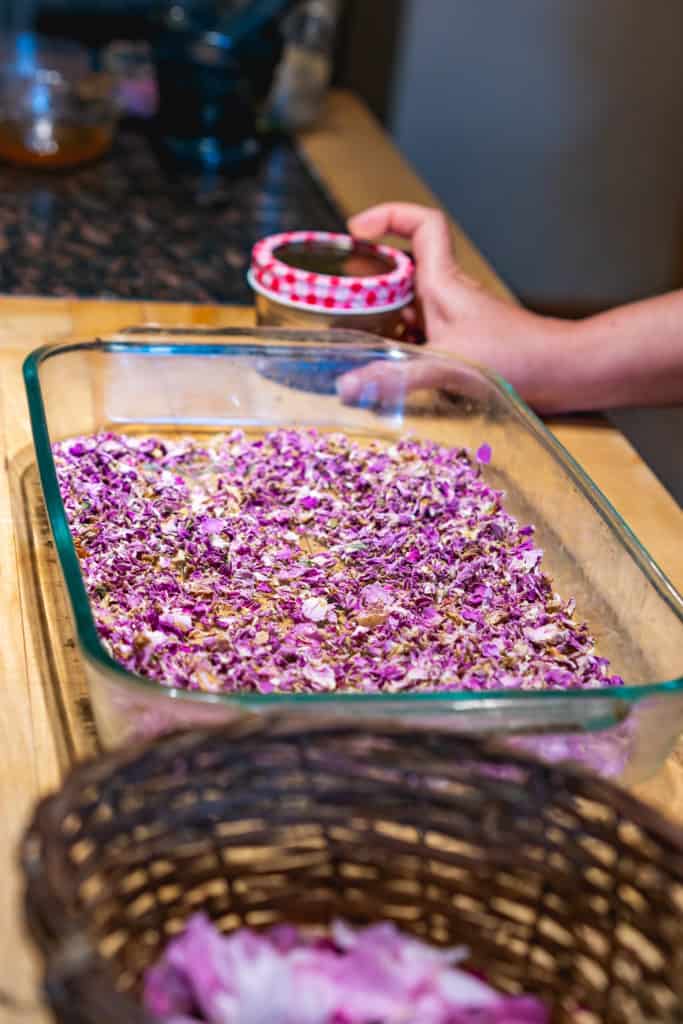
How to Dry Rose Petals
Drying rose petals is very simple and actually very quick as well. Once you harvest your rose petals simply…
- Lay rose petals on a pan in a single layer.
- Leave at room temperature for 10-12 hours.
- Every hour or so, give them a stir to make sure all sides have a chance to dry.
- Once completely dry you can keep them whole or powder them and store in a glass container with an airtight seal for up to a year.
- Store in a cool, dry place out of direct sunlight.
Homesteading Hack: If you live in a very humid climate, you can place the rose petals in the oven with just the oven light on (no heat).

Using Herbal Medicine
Growing roses not only brings beauty to a cottage garden but it doubles as a medicinal herb that can be used in a multitude of ways on the homestead. If you’re ready to take your knowledge of herbalism to the next level, be sure to check out my Herbal Medicine Cabinet: Colds and Flu Class.
